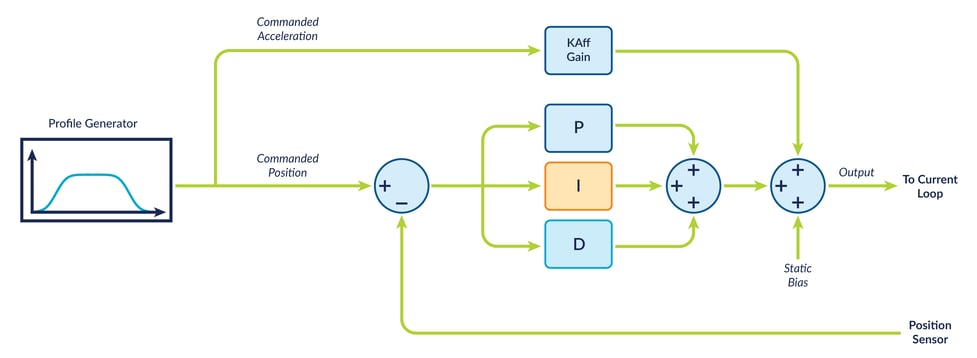Indexers, sometimes also called front end loaders, are general purpose devices that operate in the vertical dimension and form the basis of storage and retrieval systems as well devices such as Semiconductor SMIF-pod access systems. The focus of this motion application will be control of the vertical axis motion, but many storage and retrieval systems couple the vertical axis with a robotic arm or actuator to deliver the carried object to its final storage location. See the ‘Papers’ tab below for references to useful information on actuators and robotic arm control.
Axes that operate in the vertical dimension to access or deliver carried objects typically use one of a few mechanisms to achieve this. The most common is a lead-screw, where where a rotary motor directly connects to a threaded shaft which uses a lead-screw (or ball screw) mechanism to achieve linear motion. An alternative mechanism uses a belt and pulleys to achieve linear motion from a rotating motor. In cases where faster and more accurate motion is desired, or where the system reliability and lifetime must be maximized, a direct drive linear Brushless DC motor may be used. Finally, in rare cases rack and pinion mechanisms are used to convert rotary to linear motion.
Whatever the underlying mechanism there are several key motion technologies used to maximize performance. One of the most important is S-curve profiling. A typical indexer move makes a point to point move to a commanded position destination. A key consideration is to inject as little vibrational energy as possible into the mechanism during the move. S-curve profiles, which do not have acceleration discontinuities (unlike a trapezoidal profile, which instantaneously changes acceleration) achieve this and thereby allow faster and smoother moves with less settling time.

Another important motion technique is the ability to program in a DC torque offset to balance the downward force of gravity. This type of feedforward can be combined with acceleration feedforward to minimize the work that the position servo loop needs to do both at rest, and during motion. Note that if a step motor is used these drive motor feedforward techniques do not apply.
Another motion technique that bears special mention is motion error detection. There are a few different ways to achieve this but the most common is to set a position error limit for the servo loop. If the servo position error exceeds this limit it means an object has blocked the path of motion or that friction in the mechanism has increased to an unacceptable level. In both cases axis motion automatically shuts down thereby protecting the mechanism hardware and the carried payload.
The diagram below shows the control flow for a typical single axis controller with a profile generator outputting to a position servo loop which in turn outputs to a current loop. If step motors operating in microstepping control mode are used the control diagram would only have the profile generator and the current loop. All of PMD’s Magellan-based IC, module, and board products support the motion features described in this article, and more.

Since 1994 Performance Motion Devices products have been used in a wide range of vertical axis control applications including semiconductor wafer transport, incubators, tape & cartridge storage systems, automated warehouse storage systems, warehouse robotics, and more. Our Magellan Motion Control ICs, ION Drives, and Prodigy Motion Control Boards all provide the vital motion control technologies you need to successfully build your indexer controller application.
PERFORMANCE MOTION DEVICES, INC.
80 Central Street | Boxborough, MA 01719
P: 978.266.1210 | F: 978.266.1211 | info@pmdcorp.com